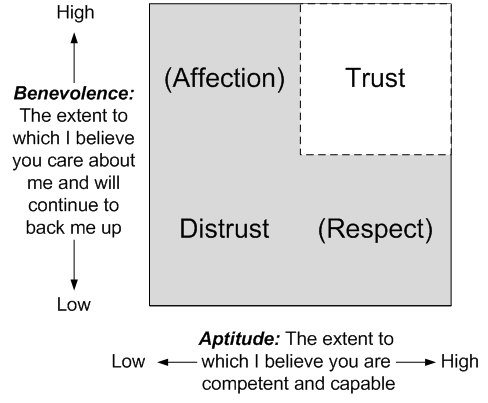 Short post time…
Short post time…
I recently saw a meme that made me smile. In an expanded form, it goes something like this:
People have three resources [e.g. when at work]:
-
- Time
- Energy; and
- Give-a-fuck
Time is the cheapest of the three resources. It replenishes one hour, every hour.
Energy is more expensive. When you’ve exhausted your supply, you need time off to recharge.
Give-a-fuck is the magic ingredient. If someone has this, then they (and those around them) can achieve amazing things! Conversely, once it’s been destroyed1, it can be very hard to recreate.
Management might have engineered a situation whereby they have lots of people spending lots of time and lots of energy ‘doing stuff’, but do the people ‘give-a-fuck’?
If not, why not?
In the main, it won’t be because of the person. Hint: Look at the nature of the system they are working within.
Conventional management puts a great deal of focus on people’s time and energy:
Re. time: “what time did you get in today? what time did you leave? How long did you take for your break? How much leave are you taking?”…etc
Re. energy: “are you busy? How much have you done today? How quickly are you working?”…etc.
The somewhat obvious point is that, if management2 put THEIR time and energy into creating an appropriate environment3 such that people ‘give-a-fuck’, then they wouldn’t have to be concerned about the time and energy of the people…because this would take care of itself.
So, it begs the question, why would people want to ‘give-a-fuck’? Well, perhaps if they had a meaningful job to do.
Which reminds me of that brilliant quote from Frederick Herzberg:
“Idleness, indifference and irresponsibility are healthy responses to absurd work. If you want someone to do a good job, give them a good job to do.”
Clarification: Most conventional managers won’t be able to tell whether people have ‘a good job to do’. Looking at management reports won’t tell them. Surveying people4 won’t tell them. Doing management roadshows won’t tell them.
To find out, they would have to get out of their offices and meetings, habitually go to where the work is done, respectfully observe it actually taking place, and critically reflect on what happens, with a laser-focus on the outcomes being achieved by/for the customers of their system.
Then, and only then, would they truly understand whether the people have good jobs to do.
Footnotes
1. Technically, being in this state is called ‘don’t-give-a-fuck’. Extreme cases add the ‘flying’ adjective to the lack of giving (as in ‘I-don’t-give-a-flying-fuck’)
2. I’m aware that, by writing ‘management’, it looks like I’m presenting a ‘them’ and ‘us’ situation. However, management is fractal in nature. One person’s ‘manager’ is another person’s ‘worker’…and so the value of the message within this post increases (likely exponentially) the higher up the hierarchy it goes…all the way up to those who are accountable for the system.
3. Appropriate environment: which would include a huge focus on clarity, and constancy, of purpose [ref. customer purpose as the anchor].
4. On surveying people – Two obvious problems with this are that:
a) many people don’t even realise that they ‘don’t-give-a-fuck’ anymore. Sure, they turn up on time and look busy…but have they become institutionalised into a state of being? [ref. turning the handle merely so that the cogs go around]
b) for those that DO realise that they are working within a system such that they no longer ‘give-a-fuck’, don’t expect them to reveal this to Management simply because they were asked to. People are far more astute/ risk averse/ protective to tell those accountable for the current system what they can’t (and/or don’t want to) see.
Running a survey is the ‘easy but wrong’ answer. Those accountable for a system need to habitually ‘get their hands dirty’ [ref. Gemba walking].
5. Explaining the image for this post: I went with a duck. Just change the ‘d’ for an ‘f’.
 …being asked (or, worse, told) to be authentic.
…being asked (or, worse, told) to be authentic. So something really important happened to me yesterday evening – I became a Kiwi!
So something really important happened to me yesterday evening – I became a Kiwi! His response was:“All Blacks over the Lions?”
His response was:“All Blacks over the Lions?”






 “The righter we do the wrong thing, the wronger we become. When we make a mistake doing the wrong thing and correct it, we become wronger.” (Russell Ackoff)
“The righter we do the wrong thing, the wronger we become. When we make a mistake doing the wrong thing and correct it, we become wronger.” (Russell Ackoff)